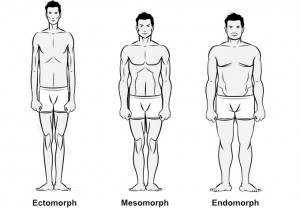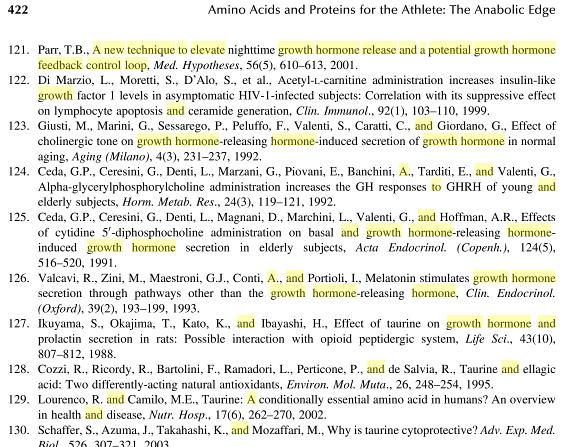I have shown in past posts that BMPs are important as a family of growth factors as well as show that GDF-5 was critical on bone longitudinal growth.
But something that I always wondered was this – Which growth factor is the strongest and have the highest ability to turn progenitor cells into chondrocytes and make cartilage?
While I had argued before that it might be GDP-5, recent research suggest that maybe it might be BMP-7 (Bone Morphogenetic Protein-7) or known as OP-1 (Osteogenic Protein-1)
I wanted to go over an article I found which would give us more information on this specific compound and see just how good it really is in cartilage formation and cartilage regeneration
Study #1: OP-1/BMP-7 in cartilage repair – Authors: Susan Chubinskaya, Mark Hurtig, and David C. Rueger
The study is just a way for the researchers who have after an additional 3 years of BMP-7 research to summarize what new information they have accumulated about the growth factor. They have done in vitro studies, ex vitro studies, an in vivo studies. The focus is supposed to be on articular cartilage and the chondrocytes in the articular cartilage but it would also reveal some research they did on the non-articular cartilage in the intervertebral disks.
The the researches concluded after years of research is that BMP-7 is slightly more pro-chondrogenic than most other growth factors. It has the pro-anabolic qualities that make it useful for cartilage repair and cartilage regeneration but it also has anti-catabolic qualities as well.
Remember –
- Anabolic (or Anabolism) – is the set of metabolic pathways that construct molecules from smaller units
- Catabolic (or Catabolism) – is the set of metabolic pathways that breaks down molecules into smaller units
BMP7 (OP-1) has been shown in multiple studies looking at multiple types of models where the articular cartilage in the tested lab animals to repair cartilage. The different ways that cartilage can degradate or break down are…
- focal osteochondral
- chondral defects
- osteoarthritis
- degeneration in intervertebral disc cartilage
In all of these types of degeneration, the growth factor has shown cartilage repair qualities.
The researchers note from the start of the Introduction section that one of the major difficulties in orthopaedics is to figure out how to get the tissue of cartilage to regeneration and repair itself. It turns out that osteoarthritis is one of the most debilitating disorders for US adults. Also, degenerative disk disease (aka DDD) is one of the main causes for chronic back pain. Researchers in recent years realize that it might be possible using BMPs, but especially BMP-7, to fix these cartilage degeneration problems. They are used as cartilage anabolic factors because of their ability to induce matrix synthesis and promote repair in cartilage.
The functions of BMPs as a general group (part of the larger TGF-Beta Superfamily) include the regulation of…
- Cellular proliferation
- Cellular apoptosis
- Cellular differentiation
- Cellular Migration
- Embryonic development
- Maintenance of Tissue Homeostasis
Recent findings show that additional functions include…
- Inducing ectopic endochondral bone formation (in subcutaneous implants)
It seems that in the adult human, there are many places which create this growth factor, but especially in the articular cartilage.
Side Fact: It turns out that OP-1 was the first BMP to get regulatory approval and be allowed to be used in the treatment of bone and cartilage disorder.
Over the years the OP-1 as a cartilage repair factor has shown to have two main abilities.
- It can induce bone formation
- It can repair cartilage
It seems that for orthopaedic disorders & conditions which involves the cartilage degradation of either the articular cartilage or the intervertebral disks, the OP-1 will be very useful in application for treatment.
In Vitro Studies
OP-1 has this ability to up-regulate chondrocyte metabolism and protein synthesis without also creating uncontrolled proliferation (and formation) of bone tissue cells known as osteophytes.
Osteophyte – commonly referred to as bone spurs or parrot beak, are bony projections that form along joint margins. Osteophytes usually limit joint movement and typically cause pain.
If we take the growth factor and put it on chondrocytes, the extracellular proteins that result from the growth factor will only be towards cartilage tissue formation.
The types of extracellular protein that will be formed include, but are not limited to…
- Collagen type II
- Collagen typ VI
- Aggrecan
- Decorin
- Fibronectin
- Hyaluronan [HA]
- Normal, functional proteoglycans
It seems that the type of extracellular matrix protein that is created by the chondrocyte from Op-1 application is consistent and it does not change, whether the chondrocyte was normal or from osteoarthritic conditions, and whether it came from an old or young individual. It doe not cause the chondrocyte to even change in shape or differentiate into hypertrophy either.
But wait, there’s more!
OP-1 seems to be able to control the stimulation and rate of formation of other types of proteins which include…
- IGF-1
- TGF-Betas
- BMPs
- Interleukin-6
It also controls the formation of chondrocyte cytoskeletal proteins including…
- Talin
- Paxillin
- Focal adhesion kinase
The other thing listed that it does was that BMP-7 can increase the gene expression of an anabolic molecule tissue inhibitor of metalloproteinase (TIMP) in both normal and osteoarthritic chondrocytes.
So we realize that it has multiple pro-anabolic abilities for cartilage tissue formation. However it doesn’t stop there. It also has inhibitory abilities for cartilage tissue extracellular matrix degradation inducing growth factors.
It inhibits these tissue degradation proteins…
- MMP-1
- MMP-3
- MMP-13
- ADAMTS-4
To summarize, the anabolic qualities seen in BMP-7/OP-1 include…
- Promotion of cell survival
- Regulates various anabolic pathways active in articular cartilage
- Activates the IGF-1 signalling pathway
This means that BMP-7 might have the ability to restore the IGF-1 sensitivity/response of the chondrocyte which are lost through aging. If we actually took the BMP-7 and combined it with IGF-1, the cartilage matrix formation increases and the proliferation of the cells/chondrocytes increases 2-fold. This effect is not seen from using either IGF-1 or BMP-7 individually.
It is interesting that if you introduced a third growth factor like basic FGF, the cartilage tissue formation would actually decrease. I wrote about the effect of basic FGF in an old post referencing a patent which showing that basic FGF with hyaluronic acid can work together to form bone tissue.
To summarize it’s anti-catablic abilities through inhibiting of matrix degenerating factors, it inhibits
- proinflammatory cytokines like Interleukin-1 and Interleukin-6
- fragments of cartilage matrix proteins like fibronectin fragments or HA hexasaccharides
- IL-6 family of chemokines
- leukemia inhibitory factor, (LIF)
- the downstream signalling molecules of the family of interleukin chemokines.
- a baseline and cytokine-induced expression of MMP-1 and MMP-13
The reseachers summarized all of the claims and results with a a passage…
“To our knowledge, OP-1 is the only BMP studied thus far in cartilage that exhibits both broad pro-anabolic and anti-catabolic activities. As we found OP-1 is a better stimulator of PGs than BMP-2, 4, 6 and cartilage-derived morphogenetic proteins (CDMPs) 1 and 2…”
Note: The cartilage derived morphogenetic proteins 1 and 2 is another name for chondromodulin type 1 and 2.
The cause on how OP-1 inhibits the MMP-13 and MMP-1 is by inhibiting the upstream activators of MMP-1 & 13, which are the NF-κB and AP-1. Not only that, there seems to be a new way that OP-1 can inhibit the IL-1β signalling. It appears that OP-1 has a potential to reverse MAPK signalling via the inhibition of IL-1β-induced P38 phosphorylation.
In terms of where we can find this special growth factor, it is found and formed in articular cartilage. It is not restricted to just humans however but most other large mammal tissue.
In terms of where else in the body can the BMP-7 protein be found from, they are…
- synovial fluid from normal joints and from patients with OA and rheumatoid arthritis (RA)
- in synovium
- ligament
- tendon
- menisci
What we know for a fact is that the gene and the expression of the gene for BMP-7 decreases dramatically with the aging and degeneration of the cartilage. In normal cartilage, the concentration of the BMP7/OP-1 is around 50 ng per gram of dry tissue.
The results from manipulating the BMP-7 concentration in chondrocytes showed that endogenous OP-1 is a critical factor that controls cartilage matrix integrity and is involved in the maintenance of normal cartilage homeostasis. The lack of OP-1 expression negatively affected a number of matrix proteins and anabolic pathways and stimulated factors associated with cartilage catabolism.
Certain BMPs, in particular BMP-7, have an important role in
- chondrocyte differentiation
- extracellular matrix production
- the maintenance of adult chondrocyte phenotype.
The next 3-4 pages of the PDF would go into showing how the application and injection of the OP-1/BMP-7 in animals for studies lead to fixing focal osteochondral defects, focal chondral defects, and osteoarthritic models.
What is probably the most fascinating for use as height increase researchers is the section called “Non-articular cartilage repair”
From the PDF…
“…The stimulatory effect of OP-1 on Intervertebral disc cells was first demonstrated in vivo by the intradiscal injection in normal rabbits. the height of the discs increased. This corresponded with an increase in proteoglycan concentration of the nucleus pulposus.”
Note: The study has been referenced multiple times in multiple posts
and it was one of the studies that really showed me in the beginning of the website just how powerful the BMPs can be. I proposed at least 1 idea on how to use the OP-1 to increase adult human height.
What happened was that rabbits had their disc heights decreased by putting a needle through puncturing the surface of the disk letting out the matrix liquid contents. Liquid OP-1/BMP-7 was injected into the NP. Six weeks after the injection a complete restoration of the disc height was observed. Biomechanical measurements demonstrated that OP-1 also restored the viscoelastic properties of the disc to the level of non-punctured control discs.
This testing with rabbits was repeated with rats and the same results showed up. The testing showed that the following compounds were all decreased or inhibited leading to anti-catabolism.
- aggrecanase
- MMP-13
- TNF-α
- IL-1β
- substance P
Conclusion
BMP-7 aka OP-1 is going to have multiple applications for cartilage repair. It is endogenously expressed in cartilage and has anabolic qualities on chondrocytes in culture. Beyond cartilage, it is also found in tendons, ligament, and synovial joint fluid.
In terms of its function, it can stimulate the synthesis of all the major cartilage extracellular matrix proteins and to counteract the degenerative effect of numerous catabolic mediators.
Animal studies have also demonstrated that OP-1/BMP-7 can be safely administered to the joint or the disc. This suggest that if humans wanted to try this idea out for themselves, it should be relatively safe. However I am not sure just how close a needle and syringe filled with BMP-7 injected into a disc would actually be relative to the spinal nerves. There is a chance that if we get the wrong area with the needle, the subject will go through extreme pain in have a nerve root stimulated directly.
What is most amazing is that there seems to be no side effects for the liquid form of BMP-7 administered to the body through say the synovial joint cavity of the knee.
“…In these studies there have been no reports of side effects, such as bone formation on the synovial or disc surface or free floating objects in the synovial fluid. Furthermore there have not been reports of inflammatory side effects such as synovitis, pannus formation or joint effusion.”
The conclusion is taken directly from the study.
The BMP-7 could be delivered locally to a focal defect site on an appropriate scaffold material or possibly delivered to the joint without a scaffold as was demonstrated in the minipump delivery study. In the disc studies liquid OP-1 was demonstrated to be effective when directly injected into the disc.
So is BMP-7 the best pro-chondrogenic, pro-cartilage formation growth factor that researchers know currently?
At this point, I would have to say yes, at least when you are talking about using a single type of growth factor alone. It has both anabolic and anti-catabolic properties for cartilage tissue extracellular matrix protein formation. There was the part which showed that with IGF-1, the results might even be better.
Implication for height increase
This compound has serious possibilities in allowing adult humans to increase their height if they can be administered in the right places. The fact that this compound is supposed to be better at stimulating proteoglycan formation than even cartilage-derived morphogenetic proteins (chondromodulin) shows just how powerful it really is.
More research still needs to be done. The areas now to figure out are…
- To pinpoint where exactly the an injection of BMP-7 or BMP-7 with other growth factor should should go.
- To figure out the amount of concentration used in each injection (the starting concentration is around 50 ng per gram of dry tissue)
- The right type of minimal invasive way to get the BMP-7 to the right locations.



